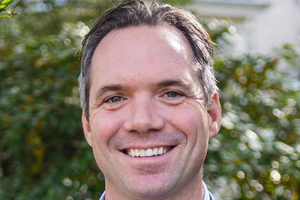Faculty Expert
For more than a decade, “college promise” programs have been sprouting up across the nation as a mechanism to address college affordability, increase enrollment and college completion rates, and reduce out-migration. College Promise Programs in the Midwest: Insights for Higher Education Leaders, a new report from the Midwestern Higher Education Compact (MHEC) researched and written by scholar Laura Perna from the University of Pennsylvania Graduate School of Education (Penn GSE), sheds new light on what these programs need to do to realize their promise.
“When I started this research almost a decade ago, it was like the Wild Wild West,” said Perna, the GSE Centennial Professor of Education at Penn GSE. “College promise programs came in all shapes and sizes, and everyone was experimenting with new ideas. Now we have clear evidence about the straightforward strategies for successful programs.”
The report grew out of requests from Midwestern state leaders to explore what contributes to the success and potential challenges of promise programs, says Susan Heegaard, president of MHEC, a non-partisan, nonprofit organization committed to strengthening postsecondary education. “College promise programs have shown great impact and have tremendous potential, and Professor Perna’s research provides important new information about the importance of program design, implementation, and evaluation.”
Against a backdrop of concerns about rising college costs and student loan debt, state governments, colleges and universities, and communities continue to develop, launch, and refine strategies to help increase college enrollment and attainment for their students. One of the more promising tactics—college promise programs—can have a noteworthy positive impact, according to the new report.
Unlike traditional grant aid programs, college promise programs provide a clear, early guarantee for students who meet defined criteria that at least some of their costs of attending college—typically tuition—will be covered. By communicating “free tuition” without requiring students to first navigate complex admission and financial aid processes, well-designed promise programs can reduce uncertainty about affordability and encourage students to aspire to and enroll in college.
Perna, an internationally known researcher on college access and affordability, has been studying these programs since 2015. Ten years later, key lessons have emerged. The new report details the distinguishing features of 132 college promise programs now in place in the 12 Midwestern states and identifies how programs should be designed and implemented to maximize desired outcomes. To realize the potential benefits of guaranteed free tuition, early awareness, alongside reliable funding and minimal eligibility requirements, are essential, Perna found.
Research demonstrates that promise programs can improve college readiness, as well as college enrollment, persistence, and completion. Promise programs also influence where students enroll, increasing attendance at eligible institutions while reducing enrollment at ineligible institutions. However, outcomes vary across programs, pointing to the importance of program design. To create programs that are effective, efficient, and provide students with needed supports, Perna suggests higher education policymakers and institutions consider these policy options:
- Reliable and adequate funding: Funding constraints can lead programs to provide smaller financial awards, add requirements to reduce the number of eligible students, and forego recruitment and support services. Uncertainty about future funding can lead a program to communicate caveats that diminish the promise of "free tuition."
- A first- or middle-dollar approach: Last-dollar programs, offered by 80% of the promise programs examined in the 12 states, provide an award that is reduced by any federal or state grant aid received. For eligible students, a last-dollar program may provide no funding that was not already available from a federal Pell Grant and state need-based grants. Although last-dollar awards allow a program to spread financial resources over more students, first- and middle-dollar approaches can help eligible students also cover essential non-tuition expenses such as books, housing, and transportation.
- Student support services: Many students often require assistance beyond tuition (such as career counseling, advising and tutoring) to meet program eligibility and succeed in college. Providing targeted outreach and support increases program costs but can also increase the likelihood that many enroll, persist, and complete college.
- Support for adult learners: Many programs target traditional-age students. Expanding eligibility to adult learners can help states meet workforce demands and help institutions address demographic changes.
- Eligibility criteria and program messaging: Clear, jargon-free communication and personalized outreach about financial benefits, eligibility, and deadlines are vital for ensuring awareness of promise programs. Eligibility criteria can make it difficult for prospective students and other stakeholders to determine who can receive program benefits and create administrative burden.
- Coordination: Coordinated efforts with other college readiness and transfer initiatives can magnify the impact of promise programs.
- Program evaluation: Regular data collection and program evaluation lead to critical program refinements and ensure opportunity, efficiency, and effectiveness in ever-changing contexts.
About the Midwestern Higher Education Compact
The Midwestern Higher Education Compact (MHEC) brings together leaders from 12 Midwestern states to strengthen postsecondary education, advance student success, and promote regional economic vitality. MHEC contracts and programs save member states and students millions of dollars annually through time- and cost-savings opportunities. MHEC research and convenings generate ideas and policy that support workforce readiness and improve the quality, accessibility, and affordability of postsecondary education. Its 12 member states are Iowa, Illinois, Indiana, Kansas, Michigan, Minnesota, Missouri, Nebraska, North Dakota, Ohio, South Dakota, and Wisconsin.
About the University of Pennsylvania Graduate School of Education
The University of Pennsylvania Graduate School of Education (Penn GSE) is one of the world’s leading schools in education research and practitioner preparation. Penn GSE partners with schools, universities, and communities to expand educational access – especially for those underserved by society – and, through rigorous research and innovative programs, develops new knowledge and transformational teachers and leaders in pursuit of educational opportunity. Follow Penn GSE on Facebook, Instagram, X, and LinkedIn.
Media contacts
Kat Stein, katstein@upenn.edu, Penn GSE, 215-898-9642
Kathy Graves, kathyg@mhec.org, Midwestern Higher Education Compact, 612-242-3184


Media Inquiries
Penn GSE Communications is here to help reporters connect with the education experts they need.









